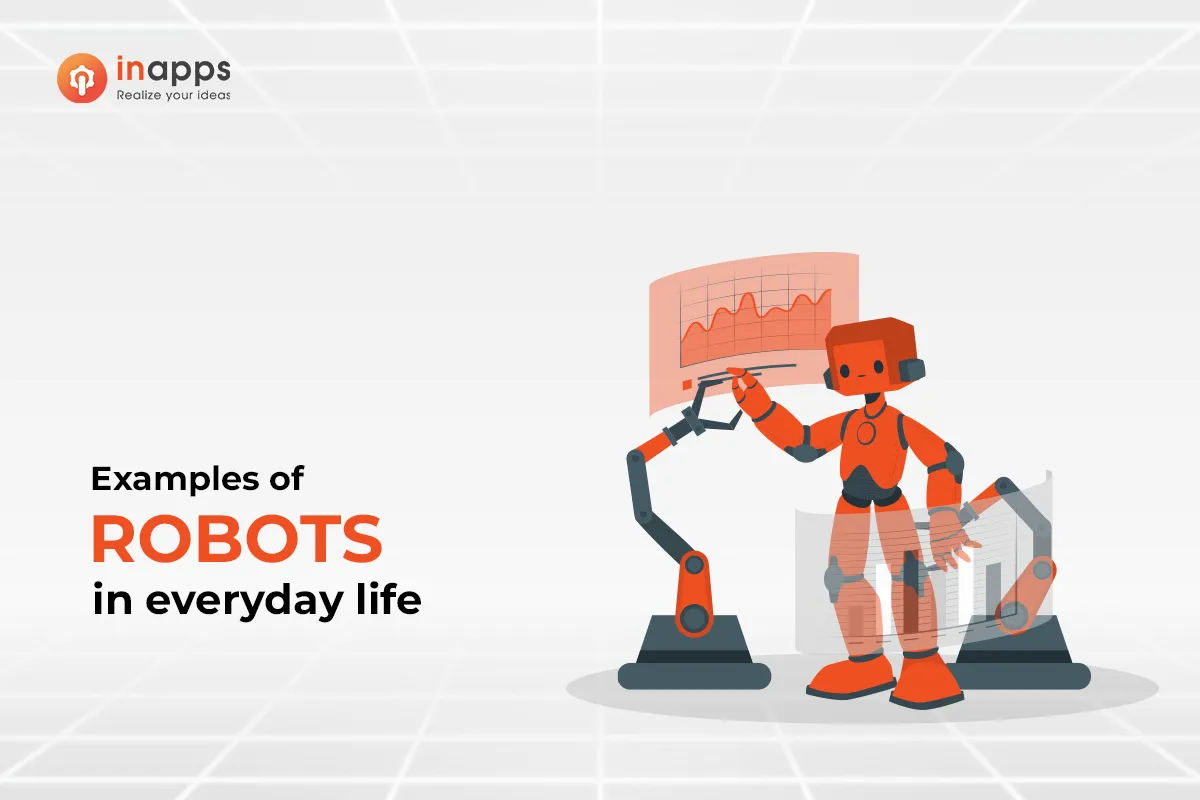Technology is advancing quickly, and robots are becoming more common in our daily lives. They are often used in factories and other workplaces to handle dangerous or tough jobs. But now, robots are also showing up in everyday places like homes and hospitals. Although some people worry about robots becoming more widespread, it’s obvious that they provide many benefits that can help everyone.
In this blog post, we’ll take a closer look at the benefits of robots, some typical examples of robots in everyday life, and how they’re changing human life.
Key Summary
Main Benefits of Robots:
-
Safety:
- Robots perform tasks in hazardous environments (e.g., nuclear plants, deep-sea exploration) to protect human workers.
- Autonomous vehicles and drones enhance safety in everyday scenarios.
-
Time-Saving:
- Automation of repetitive and labor-intensive tasks speeds up processes in manufacturing and household chores (e.g., robotic vacuum cleaners).
-
Accessibility:
- Robotic aids such as prosthetic limbs and wheelchairs enhance mobility and independence.
- Voice-activated assistants help individuals with visual or mobility challenges.
-
Surveillance:
- Equipped with sensors and cameras, robots monitor dangerous or hard-to-reach areas (e.g., bomb disposal, disaster zones).
-
Reducing Loneliness:
- AI companions provide social interaction and support, especially for the elderly or those living alone.
-
Increased Productivity & Precision:
- Robots streamline manufacturing tasks, reducing human errors in critical tasks like surgery and pharmaceutical production.
- They improve the efficiency of complex systems such as telecommunications and electrical grids.
Examples of Robots in Everyday Life:
| Category | Examples | Use Case |
|---|---|---|
| Collaborative Robots (Cobots) | Baxter robot | Work alongside humans in industrial settings |
| Domestic Robots | Roomba, Wakamaru | House cleaning and companionship |
| Medical Robots | da Vinci Surgical System | Performing minimally invasive surgeries |
| Industrial Robots | (various automated systems) | Assembly line tasks, welding, material handling |
| Entertainment Robots | Robotic toys, animatronic figures | Providing amusement and interactive experiences |
| Educational Robots | Beebots | Enhancing learning and engagement in classrooms |
| Agricultural Robots | Autonomous tractors, drones | Planting, harvesting, and crop monitoring |
| Telerobots | Remote-operated systems | Hazardous environment exploration, remote surgeries |
| Security Robots | Patrolling robots with sensors and cameras | Monitoring public spaces and protecting assets |
1. Benefits of Robots in Daily Lives
Here are some typical benefits of robots in daily lives:
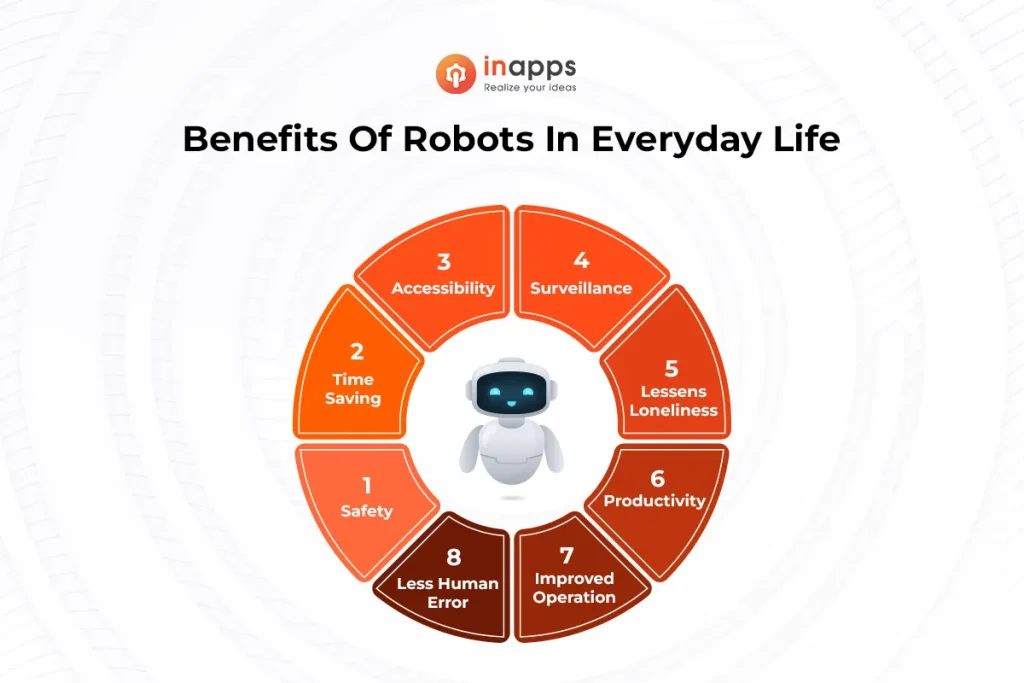
1.1 Safety
Robots enhance safety by performing tasks in environments too dangerous for humans. For examples, robots operate inside nuclear power plants where radiation levels could be lethal or they explore the depths of oceans where human divers cannot reach. In everyday scenarios, such as autonomous driving cars or drones for aerial inspections, robots help prevent accidents and manage risky tasks without human exposure.
1.2 Time-Saving
Robots are instrumental in handling tasks that are repetitive and labor-intensive. Examples of robots in manufacturing settings can assemble parts swiftly with precision, significantly reducing production time. In homes, robotic appliances like vacuum robots or automated lawnmowers keep our environments clean without us having to spend time on these chores. This automation allows people to focus on more complex or enjoyable activities.
1.3 Accessibility
Robots provide services that extend human capabilities, making it easier for everyone to accomplish more. Robotic aids, such as prosthetic limbs or robotic wheelchairs, enable mobility for those with physical limitations. In homes, voice-activated assistants help individuals with visual impairments or mobility issues by performing digital tasks like setting reminders or controlling lights without physical interaction.
1.4 Surveillance
Robots equipped with cameras and sensors can monitor environments that are otherwise challenging or unsafe for humans. For example, bomb disposal robots assess and navigate through dangerous areas to secure information, which is crucial for safe disposal methods. Surveillance drones can monitor large areas for security purposes or during natural disasters, providing real-time data that is vital for making informed decisions and ensuring public safety.
1.5 Lessens Loneliness
AI robotic companions are becoming a solace for many, especially the elderly or those living alone. These examples of robots in everyday life can engage in basic conversations, play interactive games, and provide reminders for daily activities, thereby reducing feelings of isolation. For example, social robots in senior living facilities can lead light exercise programs or storytelling sessions.
1.6 Productivity
In the workplace, robots take on roles that are either too hazardous or mundane for humans. In factories, examples of robots in the workplace handle repetitive and potentially hazardous tasks like welding or painting. This not only speeds up the manufacturing process but also reduces the physical strain on human workers.
1.7 Improved Operation
Robots improve the functionality and efficiency of complex systems such as telecommunications and electrical grids. They perform continuous monitoring and can instantly troubleshoot issues as they arise. This capability is crucial in maintaining the reliability of these essential services, reducing downtime, and making sure that repairs are carried out swiftly and effectively.
1.8 Less Human Errors
Robots greatly reduce the chance of errors in tasks that require high precision, such as in pharmaceutical manufacturing or during surgical procedures. By automating these processes, robots achieve consistency and accuracy that are challenging for human workers so that we can boost the quality of output and minimize risks.
2. 9 Examples of Robots in Everyday Life
There are several examples of robots used in everyday life. Here are 10 most common examples of robotics in everyday life.
2.1 Collaborative Robots (Cobots)
While most robots operate independently, some companies are now creating collaborative robots, or cobots. These cobots can be controlled by a human operator, making them safer for environments like factories where humans also work. Since cobots work alongside humans to complete tasks, they are also known as robotic staff augmentation. This collaboration allows people to tackle more complex tasks without the risks associated with fully autonomous robots.
Collaborative robots are mainly used in industrial environments, factories, and warehouses, but can also be found in places like shopping centers and airports. They have the potential to enhance productivity and reduce accidents in the workplace. Many experts believe that cobots will play a crucial role in the future success of businesses.
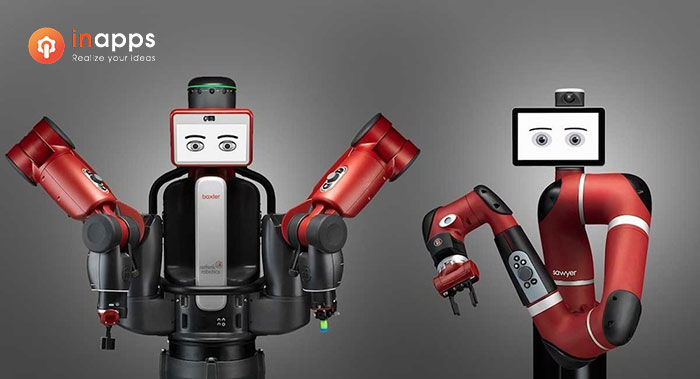
Baxter robot – Collaborative Robots
An example of a collaborative robot is Baxter, a small and lightweight cobot with two arms, easily maneuverable within various workplace settings. Baxter is designed to work in tandem with humans in places like factories. Beyond safety, Baxter is user-friendly and can be programmed to perform diverse tasks without extensive training.
Other notable robot examples in everyday life include autonomous self-driving cars, military drones, automatic vacuum cleaners, and machine-learning personal assistants like Siri on iPhones or Cortana on Windows phones. These cobots and autonomous technologies are becoming increasingly integral to our daily operations and interactions.
2.2 Domestic Robots
Domestic robots, also known as personal service robots or companion robots, are designed to assist with household chores. They are commonly found in homes and workplaces, performing tasks like cleaning, doing laundry, and caring for the elderly or disabled.
One example of a domestic robot is the Roomba vacuum cleaner. This small, autonomous robot is programmed to clean floors, carpets, and rugs. Roombas, available in various models from iRobot and other companies, have been a staple in homes worldwide since 2002, illustrating practical examples of robots in everyday life.
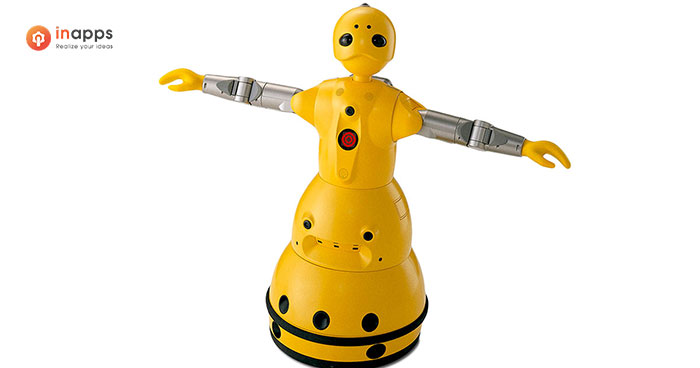
Wakamaru robot – Domestic Robots
Domestic robots are becoming increasingly popular in households around the world. It is mainly due to the high demand from older people who want to live independently for longer. A number of companies have started developing domestic robots that can be used for a variety of tasks, including cleaning and providing companionship. While most current models are designed for use in the home, there is also some interest in using them in commercial settings, such as airports, shopping malls, and hotels.
2.3 Medical Robots
Medical robots are designed to assist with various tasks in healthcare settings. They are used in hospitals, clinics, and even on ambulances. These robots range from simple tools that help surgeons during operations to advanced autonomous systems that can perform entire surgeries on their own. By 2007, a significant number of surgeries worldwide were assisted by these robots, making procedures less invasive and more precise.
The main goal of medical robots is to simplify medical procedures, making them quicker and more accurate. They are utilized for a wide array of surgical tasks such as tumor removals, needle biopsies, and endoscopic surgeries. Moreover, medical robots handle routine tests that are repetitive or challenging for human doctors, such as analyzing blood cells, conducting eye exams, and performing mammograms.
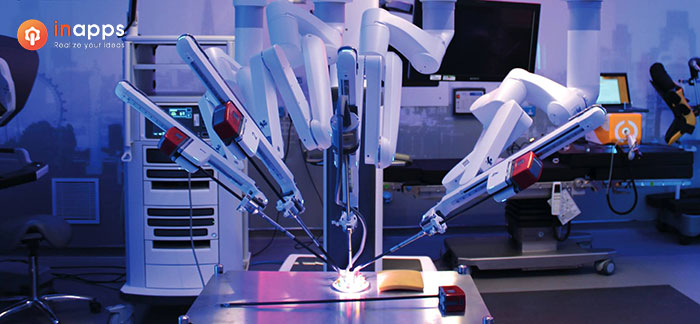
Vinci Surgical System – Medical Robots
One of the most popular medical robots is the da Vinci Surgical System, developed by Intuitive Surgical. This robotic system enables surgeons to perform minimally invasive surgeries through small incisions. Surgeons operate the robot using specialized instruments and controls. The robot has arms equipped with surgical tools and another set of arms that manage cameras and lighting, providing surgeons with a clear view inside the patient’s body.
The use of medical robots like the da Vinci system reduces the invasiveness of surgeries, which minimizes blood loss and lowers the costs. These advantages also increase the likelihood of patients recovering without complications. Additionally, surgeries performed with robots are typically quicker, allowing patients to heal faster and resume their daily activities sooner. These are practical examples of robots in everyday life, especially in medical contexts.
2.4 Industrial Robots
Industrial robots are widely used in the manufacturing industry because they are fast, precise, and can work without getting tired. They handle tasks like loading materials and welding parts on assembly lines, showing great examples of robots in everyday life. Their main strength is their accuracy, as they don’t make mistakes even when doing the same job over and over.
These robots are controlled by computers, which means their tasks are programmed in advance. They have sensors that help them “see” when a task is finished, allowing them to stop automatically. This setup ensures that the robot’s actions are always accurate, even if there’s a small error in the programming. To keep the workplace safe, these robots also have built-in safety features, such as sensors that stop the robot if a person gets too close.
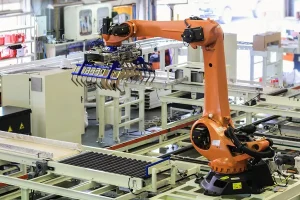
Industrial robots are especially useful for jobs that need to be done the same way many times, which a human hand can’t match for accuracy. They are often used to clean parts or join them together with welding at speeds no human can achieve. They also help speed up assembly lines, making fewer mistakes and helping produce goods faster, which lowers costs for companies.
However, there are concerns about the growing use of industrial robots. Some people worry that as robots take over more tasks, fewer jobs will be available for humans, which could lead to higher unemployment and economic issues. Today, millions of industrial robots are operating in factories worldwide, and this number is expected to increase. Many experts predict that robots will soon be found in nearly all factories, potentially impacting job availability.
2.5 Entertainment Robots
Entertainment robots are designed to amuse and engage people. They come in various forms, such as animatronic toys, robotic clowns, and automated creatures featured in science fiction films and theme park rides. These robots are perfect examples of robots in everyday life because they serve multiple purposes. They provide relaxation and fun, entertain children, and their humanoid designs can make them more approachable and trustworthy.
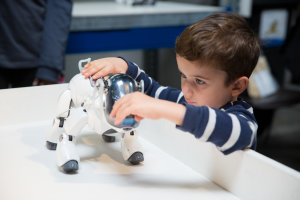
These robots are becoming increasingly popular worldwide, particularly robotic toys. Such robots offer a playful and accessible introduction to robotics for people of all ages. They are also affordable, so many families own at least one robotic toy. These toys often use machine learning to perform tasks and answer questions independently. Additionally, they can be remotely controlled through mobile devices or other electronic means.
2.6 Educational Robots
Educational robots are specially designed for use in schools and other learning environments. They assist teachers in delivering lessons and provide students with a safe way to explore interesting topics. These robots are tailored for children. They are smaller than industrial robots, equipped with numerous safety features, so they’re less likely to cause damage if they malfunction.
Educational robots offer students a hands-on opportunity to learn about machinery and delve into robotics within a controlled setting. They can also complement traditional teaching methods. For instance, students who understand basic electronics might find it engaging to apply their knowledge by programming an animatronic figure.
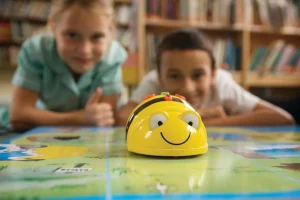
Beebots are used in classrooms to promote both literacy and numeracy.
These robots are often made from brightly colored plastic. They typically include features like flashing lights and sound effects to capture and hold children’s attention. Many of these robots are equipped with wheels or tracks, allowing them to move freely around the classroom. This mobility lets teachers employ them in various ways without needing extensive cleanup after each use. Educational robots have become a common and valuable tool in classrooms around the globe.
2.7 Agricultural robots
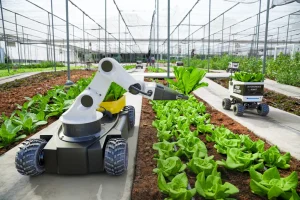
Agricultural robots are automating tasks such as planting, harvesting, and pest control. These machines allow farmers to manage larger areas with greater precision. Examples of robots in everyday life in the agricultural sector include autonomous tractors and drone monitoring systems that analyze crop health from the air.
These robots can also apply fertilizers and pesticides in exact amounts, minimizing waste and environmental impact. By automating routine tasks, agricultural robots help ensure consistent food production and support sustainable farming practices.
2.8 Telerobots
Telerobots, operated remotely by humans, are used in hazardous environments. These robots are excellent examples of robots in everyday life, especially in fields like underwater exploration and space missions. Telerobots enable technicians to perform intricate tasks from a safe distance, such as repairing underwater pipelines or handling materials in radioactive environments.
In healthcare, telerobotic surgery allows doctors to operate on patients from different locations with enhanced precision and less invasiveness. The ability to control these robots remotely greatly expands the range of activities and environments accessible to human operators.
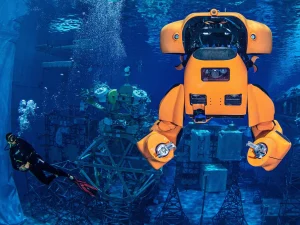
Aquanaut ROBOTS go underwater on dangerous missions
2.9 Security
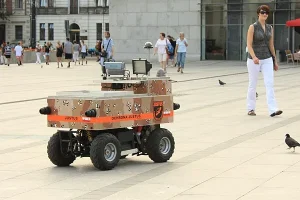
Justus robots patrol the streets for better security
Security robots are increasingly common in monitoring and protecting assets. These robust examples of robots in everyday life patrol premises using sensors and cameras to detect unauthorized activities or safety hazards. They can navigate through crowds or along predefined paths in settings like malls, parking lots, and corporate campuses. Some security robots are equipped with communication capabilities, so they can alert human operators if they detect something suspicious. By performing continuous surveillance without fatigue, security robots enhance safety and efficiency.
To sum up, there are quite many examples of robots in everyday life. I hope you enjoy this article. If you want to read more like this:
Let’s create the next big thing together!
Coming together is a beginning. Keeping together is progress. Working together is success.




